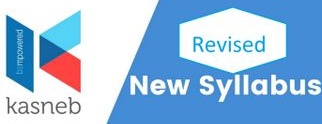Download Financial Accounting kasneb notes
PART I SECTION 1
PAPER NO.1 FINANCIAL ACCOUNTING
Click here to Purchase Financial Accounting notes
GENERAL OBJECTIVE
This paper is intended to equip the candidate with knowledge, skills and attitudes that will enable him/her to prepare financial statements for different entities.
LEARNING OUTCOMES
A candidate who passes this paper should be able to:
- Prepare books of original entry and basic ledger accounts under double entry system
- Prepare basic financial statements of sole traders, partnerships, companies, manufacturing entities and not for profit organisations
- Comply with the regulatory framework in the accounting field
- Account for assets and liabilities
- Analyse financial statements use of ratios and statement of cash
CONTENT
Introduction to accounting
- The nature and purpose of accounting
- Objectives of accounting
- Users of accounting information and their respective needs
- The accounting equation
- Regulatory framework of accounting (regulatory bodies such as ICPAK, IFAC, IASB, IPSASB, IAESB)
- Accounting standards (IASs/IFRSs) (importance and limitations)
- Professional ethics
- Accounting concepts/principles
- Qualities of useful accounting information
Recording transactions
- Source documents: quotations, purchase orders, statement of account, remittance advice, receipts, petty cash vouchers, sales and purchase invoice, credit notes and debit notes, bank statements
- Books of original entry: sales journal, purchases journal, returns inwards journal, returns outward journal, cash book, petty cash book and general journal
- Double entry and the ledger; use of T- accounts and double entry aspects (debit and credit), sales ledger and purchases ledger
- The trial balance
- Computerised accounting systems – role of computers, application and accounting softwares in the accounting process, benefits and challenges of operating computerised accounting systems
Accounting for assets and liabilities
Assets
- Property, plant and equipment – recognition, capital and revenue expenditure, measurement (depreciation and revaluation), disposal and disclosures, property, plant and equipment schedule
- Intangible assets – recognition, measurement (amortisation, impairment and revaluation), disposals and disclosures
- Financial assets – examples and risks only
- Inventory – recognition, measurement and valuation using specific cost method, FIFO and weighted average cost only
- Trade receivables – bad debts and allowance for doubtful debts and receivables control accounts
- Accrued income and prepaid expenses
- Cash at bank – cash book and bank reconciliation statement
- Cash in hand – cash book and petty cash books
Click here to Purchase Financial Accounting notes
Liabilities
- Bank overdraft – cash book and bank reconciliation statement
- Trade payables – control accounts
- Loans – accounting treatment of repayment of principal and interest
- Prepaid incomes and accrued expenses
Correction of errors and suspense account
Financial statements of a sole trader
- Income statement
- Statement of financial position
Financial statements of a partnership
- Partnership agreement
- Introduction to partnership accounts
- Distinction between current and fixed capital
- Income statement
- Statement of financial position
- Changes in partnership – admission of a new partner, retirement, death and change in profit sharing ratio
Financial statements of a company
- Types of share capital – ordinary shares and preference shares
- Issue of shares (exclude issue instalment and forfeiture)
- Types of reserves – share premium, revaluation reserve, general reserves and retained profits
- Income tax – accounting treatment and presentation (exclude computation)
- Financial statements – income statement and statement of financial position
- Published financial statements (describe a complete set of published financial statements but not preparation)
Financial statements of a manufacturing entity
- Features of a manufacturing entity
- Classification and apportioning costs between manufacturing, selling and administration
- Financial statements – manufacturing account, income statement and statement of financial position
Accounts from incomplete records
- Features
- Types of incomplete records(pure single entry, simple single entry, quasi single entry)
- Ascertainment of profit capital comparison
- Preparation of statement of affairs and profit determination
- Techniques of obtaining complete accounting information
Financial statements of a not for profit organisation
- Distinction between not for profit making organisation and profit making organisation
- Nature of receipts and payments account
- Accounting treatment of some special items
- Income and expenditure account
- Statement of financial position
Analysing financial statements
- Statement of cash flows (categories of cash, methods of preparing statement of cash flows and the importance)
- Financial ratios – definition, categories, analysis and interpretation, application and limitations
Introduction to Public Sector Accounting
- Features of public sector entities (as compared to private sector)
- Structure of the public sector (National and county governments, state corporations and other agencies)
- Regulatory structures and oversight IPSASB, PSASB (establishment, mandate and functions), Director of Accounting Services, National Treasury, Parliamentary Committees, Accounting Officers at national and county levels]
- Objectives of public sector financial statements
- Objectives of IPSAS
- Accounting techniques in public sector (budgeting, cash, accrual, commitment and fund)
(Preparation of financial statements excluded)
Emerging issues and trends
Click here to Purchase Financial Accounting notes
